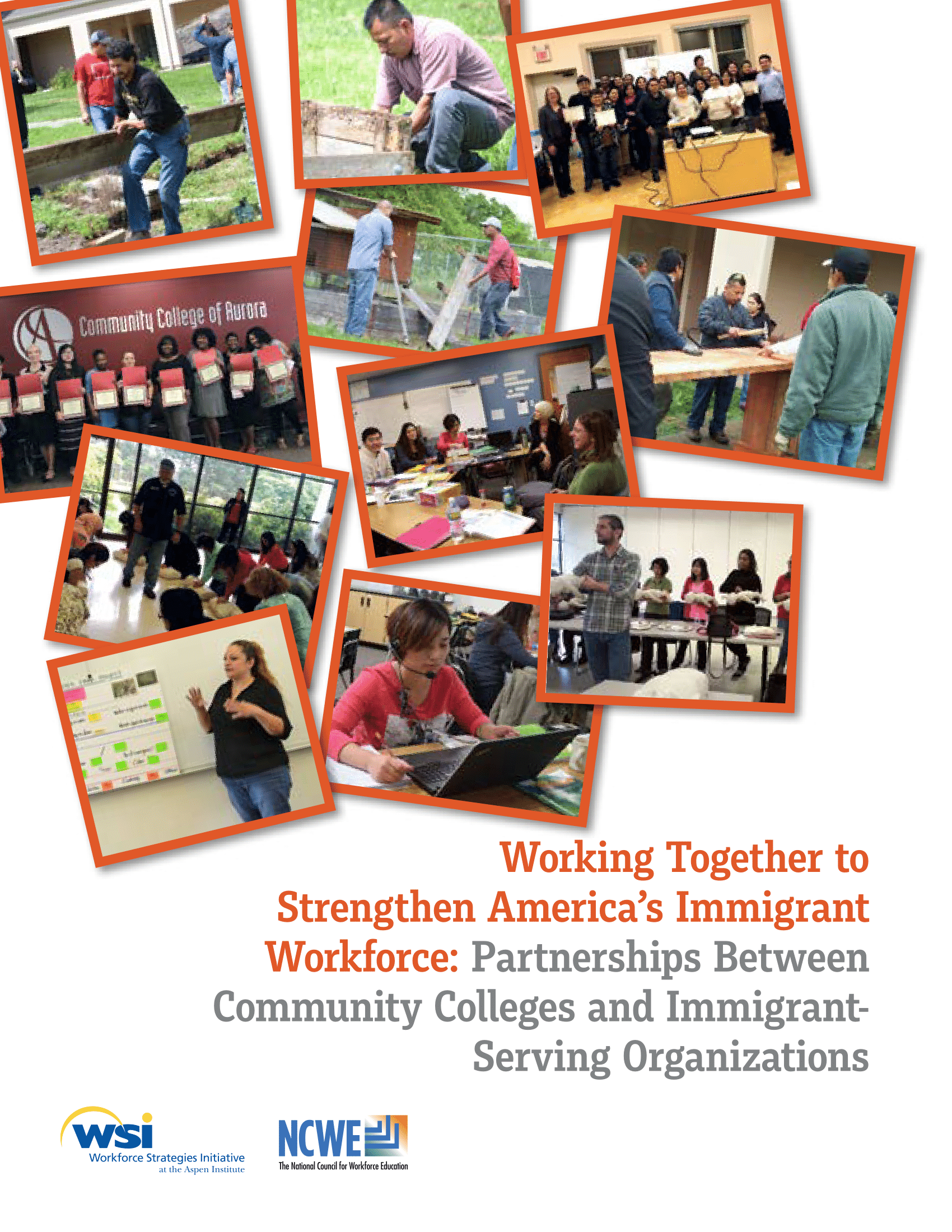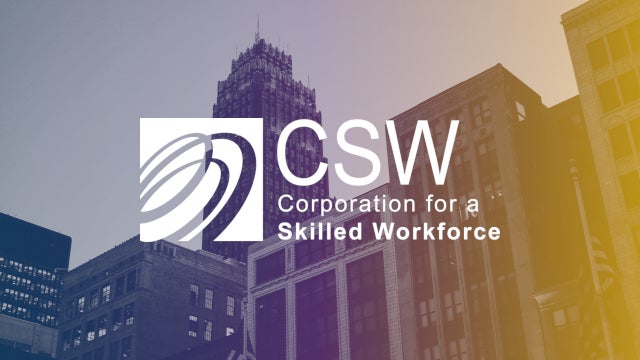America’s workforce was 16.7 percent foreign-born in 2015 (26.3 million people). Immigrant workers are a key segment of our workforce and economy. However, immigrant and workforce organizations are challenged to effectively meet their education, skill-building and employment needs. To help expand immigrants’ access to skill-building and career-advancement opportunities, one approach is the formation of partnerships between immigrant-serving organizations — such as worker centers and community-based organizations — and community colleges. Such partnerships are rare, and pioneering organizations are just beginning to work together, but early partnerships show promising potential.
Working Together to Strengthen America’s Immigrant Workforce: Partnerships Between Community Colleges and Immigrant-Serving Organizations, written by AspenWSI Senior Research Associate Marcela Montes and EOP Associate Director Vickie Choitz, aims to advance the development of these partnerships. It documents the lessons from seven collaborations between immigrant-serving organizations and community colleges in the Building Community Partnerships to Serve Immigrant Workers initiative of the National Council for Workforce Education.
AspenWSI’s research focused on the motivations for partnerships, factors that enable these types of collaborations, and strategies for funding and sustaining partnerships. Working Together to Strengthen America’s Immigrant Workforce: Partnerships Between Community Colleges and Immigrant-Serving Organizations outlines the potential value of partnerships, such as the combination of critical resources and experiences to more effectively meet their shared goals. It shares what partners told us it takes to develop and maintain strong partnerships, providing examples of successful and promising partnerships. It also explores considerations for future research and development.
We hope readers will be able to use the lessons and key takeaways from our research to strengthen their own partnerships and to help others engage in similar collaboration. We invite you to read the report, and as always, please share your feedback by tweeting at @AspenWorkforce with the hashtag #talkgoodjobs.
We are grateful to the Annie E. Casey Foundation for their support for this research.


